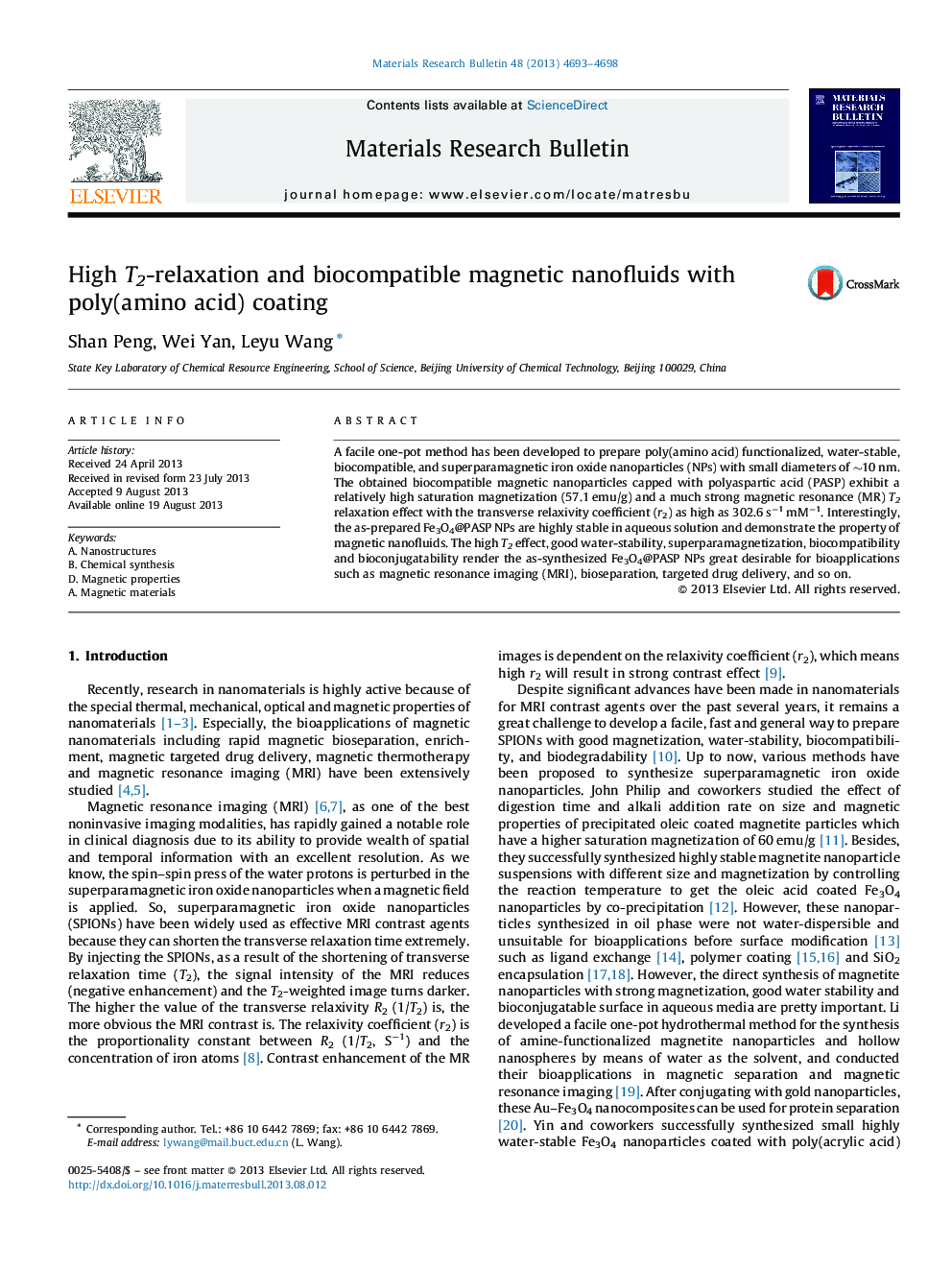| Article ID | Journal | Published Year | Pages | File Type |
|---|---|---|---|---|
| 1488950 | Materials Research Bulletin | 2013 | 6 Pages |
•A facile and general one-pot hydrothermal strategy for the fabrication of Fe3O4@PASP NPs.•These magnetic NPs are highly water stable, biocompatible and bioconjugatable.•NPs exhibit strong magnetic resonance T2 relaxation effect (r2 = 302.6 s−1 mM−1).•After the removal of the magnet, the NPs can disperse by themselves into the solution without stirring or ultrasonication.
A facile one-pot method has been developed to prepare poly(amino acid) functionalized, water-stable, biocompatible, and superparamagnetic iron oxide nanoparticles (NPs) with small diameters of ∼10 nm. The obtained biocompatible magnetic nanoparticles capped with polyaspartic acid (PASP) exhibit a relatively high saturation magnetization (57.1 emu/g) and a much strong magnetic resonance (MR) T2 relaxation effect with the transverse relaxivity coefficient (r2) as high as 302.6 s−1 mM−1. Interestingly, the as-prepared Fe3O4@PASP NPs are highly stable in aqueous solution and demonstrate the property of magnetic nanofluids. The high T2 effect, good water-stability, superparamagnetization, biocompatibility and bioconjugatability render the as-synthesized Fe3O4@PASP NPs great desirable for bioapplications such as magnetic resonance imaging (MRI), bioseparation, targeted drug delivery, and so on.
Graphical abstractPoly(amino acid) functionalized, highly water-stable, biocompatible, high T2-relaxation, and superparamagnetic iron oxide nanofluids were successfully synthesized via a facile one-pot strategy.Figure optionsDownload full-size imageDownload as PowerPoint slide
